"The Pearl of the Orient" Here
are the basics on a very diverse country.... The
Land
The Pearl of the Orient, the Philippines. The
Philippines officially consist of 7,107 islands of which only 2000 are
inhabited. Only about 500 of the islands are larger than 1 one square
mile, and 2,500 aren't even named. The
7,100 islands scattered in an archipelago which is actually part
of a great primeval mountain range stretching from Japan south to
Indonesia. Prehistoric geological activity (the Philippines has over 200
known volcanoes) and incessant monsoon rains have resulted in a rich
landscape with a magnificent variety of natural wonders. From the
powdery fine sands of Boracay, to the mysterious elegance of Bohol's
Chocolate Hills, or from the majestic perfection of Mt. Mayon's famous
cone, to the incredible triumph of the Banaue Rice Terraces, the
Philippines is filled with natural wonders sufficient for more than a
lifetime of study. The
total area of the Philippines is 191,000 sq. mils. From North to South
the Philippines stretches 1,156 miles, and from East to West 687 miles.
The highest Peak is Mt. Apo in Mindanao, at 7,385 ft. Mt. Pulog in North
Luzon is the second at 7,325 ft.
There are 37 volcanoes, 18 of which are classed as active including the
Mt. Mayon Volcano in South Luzon and Mt. Pinatubo nort west of Manila in
Central Luzon. The longest rivers are the Cagayan, Pampanga, and Agno in
Luzon.
History and Culture
The
Philippines is unique as the only Christian country in Asia, over 90% of
the population is Christian. The Spanish did a thorough job. The
Philippines has developed a unique mixed culture of foreign influences,
mainly Spanish and North American, which can be seen everyday, as even
the smallest village square is converted into a basketball court. Ever
since US colonial times the country has been crazy about this sport of
giants - even though the Filipinos themselves tend to be under tall.
During the period of Spanish occupation, Spanish was taught in schools
and developed, as the language is still present to-day, in the numerical
system and in the Zamboangan language in Chavacano. Spanish was
abolished as a compulsory subject in 1968. Since the declaration of
total independence from the USA in 1946, English has remained the
language of commerce and Politics. Newspapers, TV, Radio, and Government
statistics are evidence of this.
The Philippines education system is largely based on the North American
model: primary education (elementary schools), secondary education (high
schools), and higher education (colleges, universities). School
attendance is compulsory for the first four years of the six years
elementary school. With an illiteracy rate of only 12% of the population
over fifteen, the standard of education is high compared with other
developing countries.
First officially gaining modern European notice, the islands were discovered by the Portuguese explorer, Ferdinand Magellan sailing as a representative of Spain while searching for the legendary Spice Islands in 1521. It was however, Ruy Lopez de Villalobos, another Spaniard who gave the islands its present name after King Philip II of Spain in 1542. Utilizing a careful balance of superior technology and religious conversion, the Spaniards colonized the islands and remained in power for over three centuries. During the latter decades of the 19th century, a rise of nationalism swept the country and became the foundation for Spain's inevitable eviction. Filipino national heroes like
Aguinaldo, Bonifacio, and Rizal emerged as revolutionary vanguards who led the way to Philippine independence. Filipino guerillas with the help of the Americans (who were engaged with Spain in a war over Cuba) eventually succeeded in forging a new republic in 1899 with Emilio Aguinaldo as the first president of the Republic of the
Philippines. The Americans however stayed on and defined their role as one of tutelage and instituted massive political, social, and economic development making the Philippines a commonwealth and promising independence in 1945. During World War II however, the Japanese defeated the Philippine-American forces and were able to occupy the Philippines for 3 ½ years. They were eventually defeated when the Philippine-American guerilla forces were bolstered by the triumphant and promised return of General Douglas MacArthur and his powerful expeditionary force. On July 4, 1946 the Philippines was finally declared an independent
nation
In 1521 Ferdinand
Magellan, a Portuguese seafarer, arrived at the Islands, erected a Cross
in Mactan and claimed the whole archipelago for Spain. Lapu Lapu, a
proud Filipino chief, opposed the Spanish authority and this led to a
battle in which Magellan was killed.
Roy Lopez de Villalobos, was the next
to try and claim the Islands for Spain. He reached the island realm with
an expedition in 1543, and named it "Filipinas" after King
Philip II of Spain. The permanent Spanish colonial rule of the
Philippines began in 1565.
In November of that year, Miguel Lopez de Lagaspi landed with his fleet
at Bohol. In Tagbilaran, Legaspi sealed a blood friendship with the
island ruler Rajah Sikatuna. He went on to conquer Cebu, a short time
later and erect the first Spanish Fort in the Philippines.
In 1571, Legaspi conquered Manila, and a year later the while country,
with the exception of strictly Islamic Sulu Islands and Mindanao, was
under Spain domination. With the zeal typical of the Spanish at the
time, churches were built and the propagation of Catholicism began.
In 1898, as a result of a dispute over Cuba, a war between Spain and the
USA broke out. Under Admiral Dewey the Spanish Fleet was decisively
beaten in Manila Bay. The USA paid the Spanish US$20 million for
possession of the Philippines and this was ratified by the Treaty of
Paris in 1898.
After President Roosevelt recognized the newly drawn up Philippine
constitution, Manuel L. Quezon was sworn in as president of the
Philippine Commonwealth.
Following the attack on Pearl Harbour, Japanese troops landed in Luzon
and conquered Manila in 1942. This brought about the brutal Japanese
military rule, which continued till 1944 when General Douglas MacArthur
fulfilled his promise to return and liberate the Philippines from
Japanese.
In 1946, the Philippines received full independence as had been promised
in 1935 by the USA. The first President of the Republic was Manuel Roxas.
The
People The
Philippines today is a
dynamic result of its
tumultuous history
resulting in a nation rich
with influences and
flavors from its different
colonial experiences. Due
in large part to Spanish
influences, it has the
distinction of being the
only pre-dominantly
Christian country in Asia.
The people are known
throughout the world for
their hospitality and
friendly disposition
especially towards
visitors. They are quite a
fun loving crowd always
ready to lend a helping
hand if not a friendly
smile.
Customs
and Traditions
Due
to its diverse colonial
history, Filipino customs
and traditions are equally
as diverse. Some
traditions have been
eroded by modernization
but a lot of them are
still noticeable and can
be traced back to colonial
ancestry. For example, the
"fiesta" or the
celebration of a town's
patron saint's feast day
is a direct carry over
from Spanish times. Once a
year, Philippine towns
hold huge feasts to
celebrate this event which
is next only to Christmas
and New Year's Day in
order of importance.
|
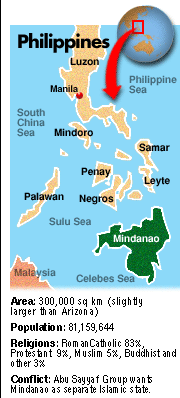
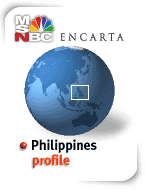
(click above)
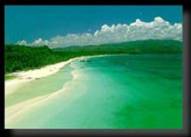
Boracay
Island
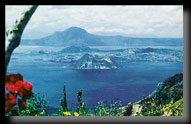
Tagaytay
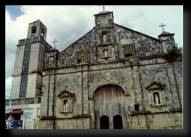
Bantayan
Church

Guimaras
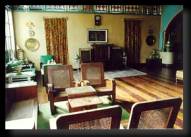
Interior
of an old house
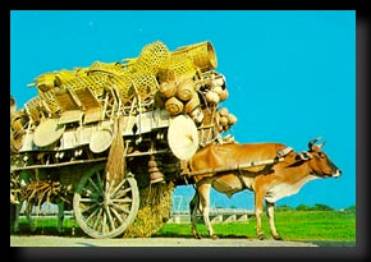
Native Caravan
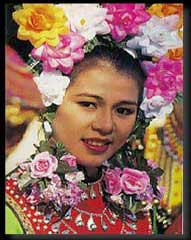
Filipina Beauty
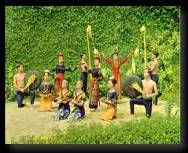
Pagdiwata
Dance
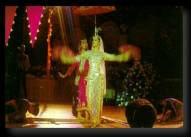
Singkil
Languages
The
main language spoken is
Filipino which is a
variation of the Tagalog
dialect. There are many
dialects spoken all over
the country but Tagalog is
usually understood
everywhere. English is the
secondary language largely
due to the Americans, and
is also widely understood.
Spanish to some extent is
still used but only in a
select few households.
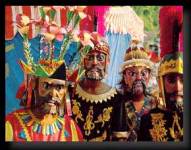
Moriones Festival |
